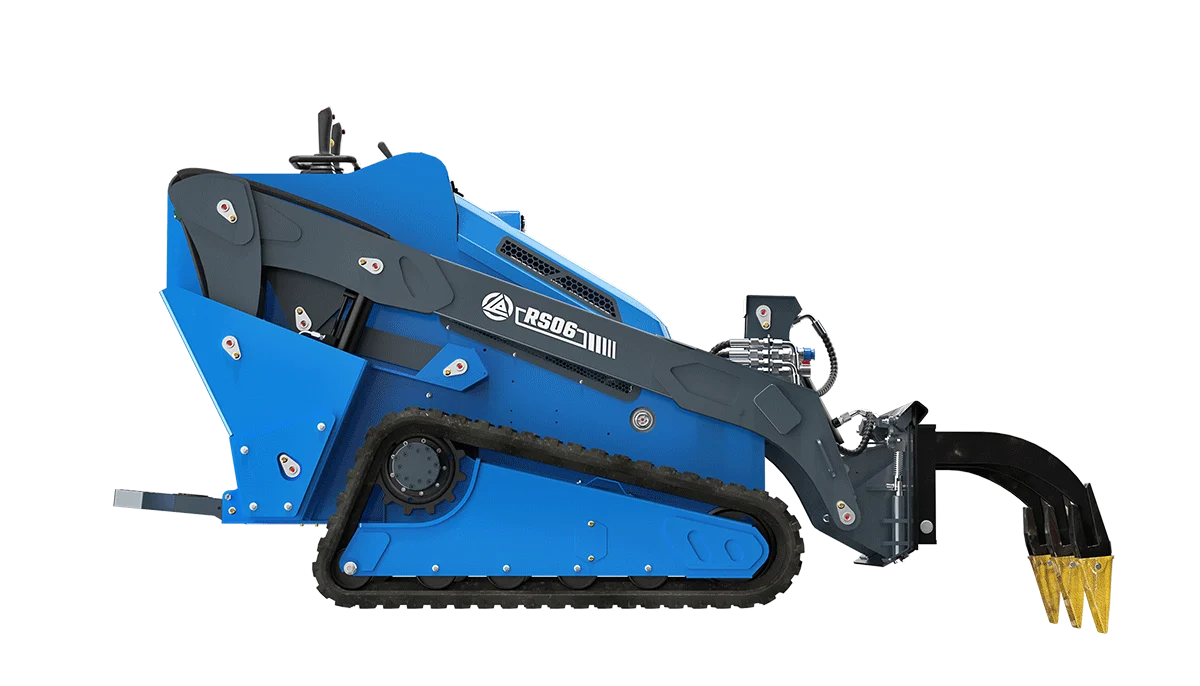Lis 03, 2025
[newsletter_form]A skid steer loader is one of the most versatile and powerful machines on a construction site. Compact, agile, and easy to operate, it can handle digging, grading, lifting, and loading with the right attachments. If you’re new to this equipment, understanding how to use a skid steer safely and efficiently is essential. This guide will walk you through the basics — from setup and operation to safety tips and maintenance.

A skid steer loader is a compact, engine-powered machine with lift arms used to attach a wide variety of tools and attachments. It can perform multiple jobs such as landscaping, trenching, snow removal, and material handling. Depending on the model and capacity, like the RIPPA rs07 skid steer, it can operate efficiently in tight spaces while delivering high performance.
Before starting the machine, sit inside the cab and take time to understand the control system.
Joysticks or levers: Control movement and bucket operations.
Foot pedals: Often used to control the boom or bucket.
Display panel: Shows engine information, hydraulic pressure, and warnings.
Modern skid steers, such as those from RIPPA, come with user-friendly interfaces and ergonomic designs, making operation smoother for beginners.
Operating a skid steer without proper safety precautions can be dangerous. Follow these safety steps:
Wear proper PPE: Hard hat, gloves, steel-toed boots, and reflective clothing.
Inspect the machine: Check hydraulic fluid, fuel, tires or tracks, and attachment connections.
Clear the work area: Remove obstacles, people, or loose debris before moving.
Seat belt and restraint bar: Always secure them before starting the engine.
Enter safely using the steps and handles.
Start the engine using the ignition switch or push button.
Unlock the safety bar to activate controls.
Move slowly forward and backward to get a feel for the machine’s response.
Practice turning: Skid steers turn by “skidding” one side’s wheels — use slow, controlled movements to avoid damaging the surface.
One of the greatest advantages of a skid steer is its compatibility with different attachments.
Bucket: For digging, loading, and grading.
Pallet fork: For material handling and warehouse work.
Auger: For drilling holes in soil or ice.
Snow blower or brush: For snow and debris removal.
RIPPA skid steers are designed with quick-attach systems, allowing operators to switch attachments in minutes, increasing productivity on any job site.

Smooth movements: Avoid jerky motions to prevent spillage or imbalance.
Load evenly: Keep the bucket level and avoid overloading.
Keep the bucket low: When driving with a full load, keep it close to the ground for stability.
Use appropriate speed: Slow in tight areas, faster in open ground.
Avoid steep slopes: Always drive straight up or down slopes, never sideways.
At the end of your task:
Lower the bucket or attachment to the ground.
Set the parking brake.
Turn off the engine and remove the key.
Exit the cab safely using the handrails.
Always clean the machine after work, especially around hydraulic couplings and joints, to ensure long-term durability.
Regular maintenance ensures smooth performance and safety. Check:
Hydraulic oil and engine fluids.
Tire or track tension.
Attachment locking systems.
Air filters and cooling systems.
For professional use, choose a reliable machine from a trusted manufacturer like RIPPA, known for its durable and fuel-efficient skid steer loaders that are built to last.
Learning how to use a skid steer effectively can save you time and money on any construction, agricultural, or landscaping project. Start with basic controls, follow safety procedures, and practice operating different attachments to enhance your skills. With modern, high-performance models like the RIPPA rs07, you’ll enjoy smooth operation, strong power, and dependable performance for years to come.